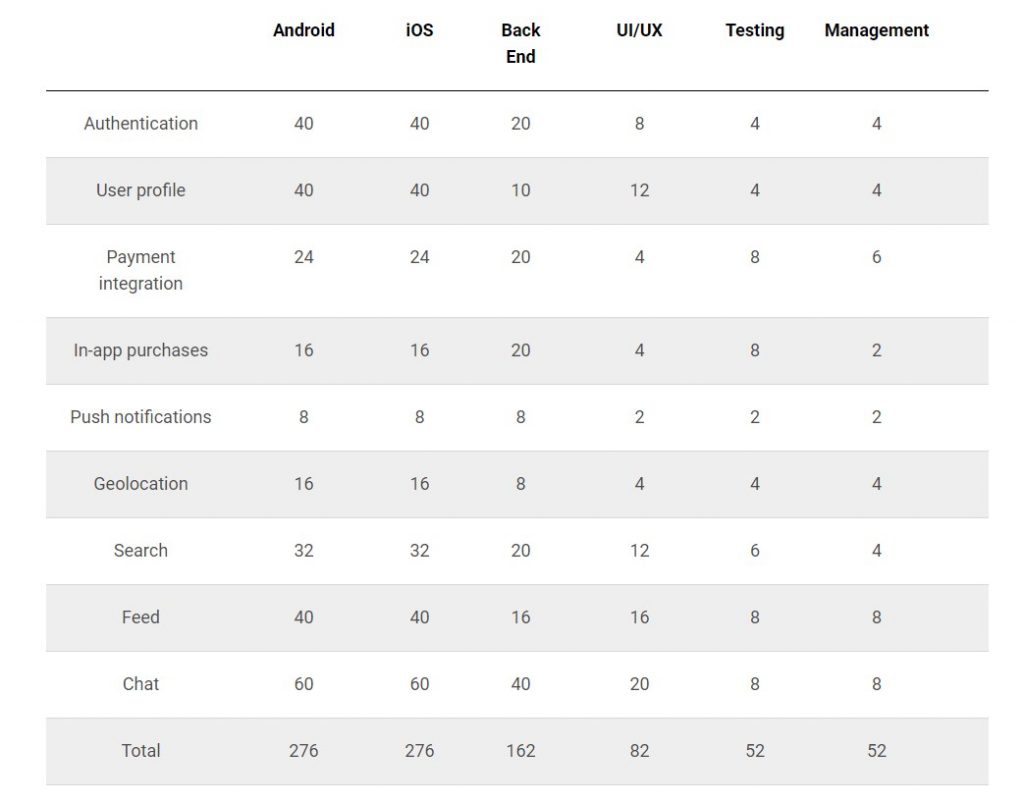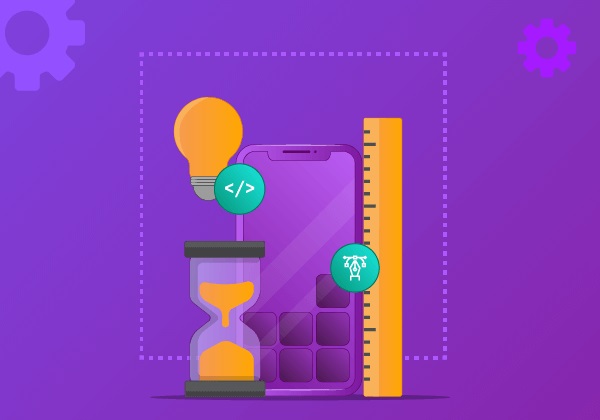Introduction
The next question that pops into your mind after “How much does it cost to build an app?” is “How much time does it take to develop one”. Just like in case of the price, there is no single answer to this.
It does not mean that an app cannot be released in a month or take longer than half a year. At IDAP we have dealt with both situations. However, the application development timeline is influenced by many factors, and that is what we are covering in this article.
Let’s find out how long does it take to build an application from scratch.
How application’s timeline looks from the vendor’s perspective
Take a look at your App Store, and you will notice that there are some really cool applications that are intuitive and super fast, while there are also some hideous apps that are difficult to comprehend, have a weird design, and make you want never to open them again.
And while the second type does not actually require much time or money to create, the first type is super time-consuming. Such groundbreaking apps cannot be built and left to improve on their own.
Successful projects have thousands if not millions of working hours put into them. Moreover, they have team of bright minds behind them. As a result, users get a mind-blowing experience. Applications like Spotify, Uber, Tinder, Snapchat, etc. have taken years to reach the current level regarding a number of users and market presence.
Read Also: How Much Does It Cost to Build Music Streaming App Like Spotify
Of course, that means that anyone entering the market has to face an extreme competition in the face of today’s giants, not their only-released-yesterday versions.
Does it mean that developing new applications is not worth it anymore? Nope, quite the opposite. You should put time and efforts into your idea, but with having a clear understanding that perfection takes time.
Project implementation consists of several stages. They go as follows:
- Discovery and planning
- Design
- Development
- Testing
- Release and support
1. Discovery and planning

While planning is not the longest part of the project, it is fairly considered the most significant one. The future success of the project greatly depends on how well it was scoped. It is necessary to define the role of the project for business, its goals, and objectives.
Planning is not solely the cost and time estimations. It is making sure the client and the vendor share the understanding of what they are working for, and what the final product should look like. The more detailed is the preparation, the higher is the chance that the project will be able to meet the needs of a certain business, and satisfy the contemporary user in a number of features, design, and overall usability.
In the course of planning the app development, the following issues have to be covered:
1. In-depth analysis of the business
(characterize the target app user, research competitors, study business processes, examine customer feedback if any);
2. Define time and budget limits of the project
(specific timing requirements for entering the market; is there a fixed sum that cannot be exceeded);
3. Lay out the technical requirements for the project
(What kind of language the app is going to be programmed in? Which operating system it will be created for iOS, Android, or both? What standards the finished product has to meet?);
4. Designate the project development team
Decide on the number and specialty of stuff you need to implement the project.
5. Present a comprehensive list of the essential and advanced features that should be developed
6. Make sure that user red routes are obstacle free so the finished product usability would not suffer.
All in all, the stage of planning can vary from two weeks to two months depending on how big the project is. The next stage of the project is:

2. Design
Once the plan of the application development has been set up, the designer takes the stage. Usually, the process of design begins with understanding product’s purpose and researching the target audience.
The designer has to know who they are aiming for, what are their needs and expectations. The application in question has to answer user’s expectations, and sometimes even do more than that.
Afterward, the process continues with building concepts of how screens are going to look to the user. Based on the collected information, wireframes for the application will be made. Wireframing allows iterating screens before moving to the next stage. It’s a constant series of trying, receiving feedback, and redoing design until that perfect solution is found.
Compared to a detailed application layout, setting up wireframes is much quicker and cheaper. Moreover, this format is perfect for gathering feedback without putting too much effort into the creation.
Users care more about application’s value and usability, rather than aesthetic elements. So based on the collected opinions, wireframes can be easily modified without adjusting the code or graphics.
Once the wireframes have been approved, it’s time for designing a full-scale design with color schemes and trendy design elements.
Design can take from N to N weeks, sometimes even more that X months. Some of the managers continue to underestimate wireframes role in the application design process. However, they are essential if you want the product to be exceptional.

3. Development and implementation
The time needed to code the application depends on a list of factors:
- Number of tech specialists working on the project;
- Number of platforms the application is developed for;
- Complexity of design (animations, parallax, micro-interactions);
- Amount of data that has to be stored and processed;
IDAP develops native applications for each platform separately. The two versions are built simultaneously to be released at the same time. However, if you are about to launch a new product, we recommend going for iOS first, as it is much faster to develop for Apple products without having to worry about consistency.
The approximate hourly estimate of the development of the application’s basic features:

Read Also: How Much Does It Cost To Develop a Custom Application?
4. Quality Assessment and Post-development Support
The time required to test and bug-fix the finished product relies on the size and complexity of the developed application. Every built feature has to work according to the project documentation. Since this is a project that requires not only testing the product but also making efforts to fix some inconsistencies, it can take quite a lot of time. Usually, it lasts one week to a month.
Submitting the application to the Apple or Google store also needs some time to meet the publishing standards of both companies. Your business would have to create its own developer account, receive all required certificates and receive approval from the Store’s administration.
Nevertheless, the release of the application does not mean it is not going to require any more of your time. As the world continues to acquire more and more tech innovations, you will have to make sure your app is matching them. The built app has to grow together with devices and operating systems.
Therefore, there are no set time limits for this one.
Summary
Timing is everything. If you want to intrigue the world, you have to make sure your product is released exactly on time. Not a minute early, not a minute late. On the average, the simple MVP requires about 6 months to develop.
At IDAP we work by following the agile software development approach. It allows us to interact closely with clients and adjust project on the way according to their vision.
In case you are looking for a perfect tech team to implement your project – we are already here. Contact us for more information.



